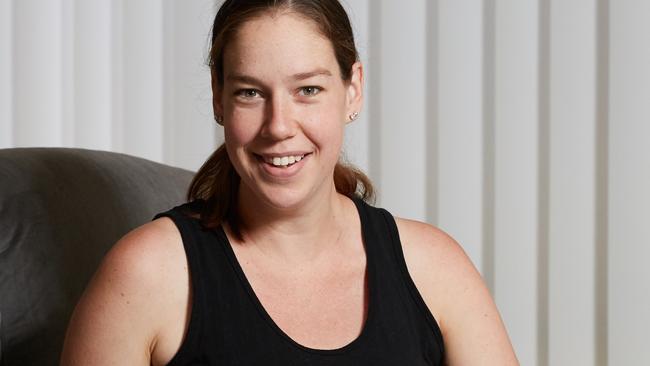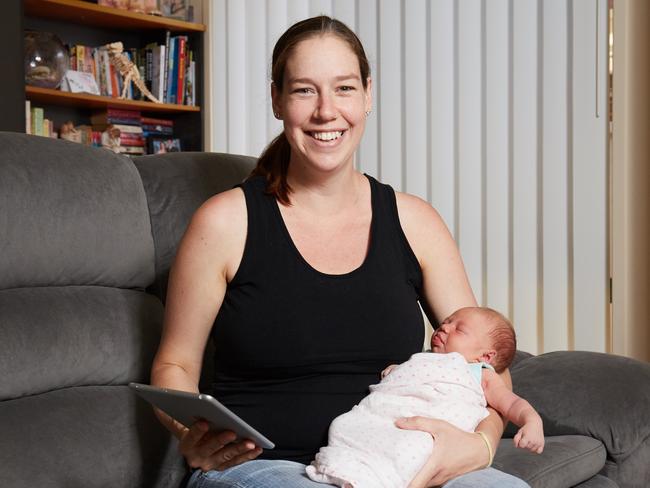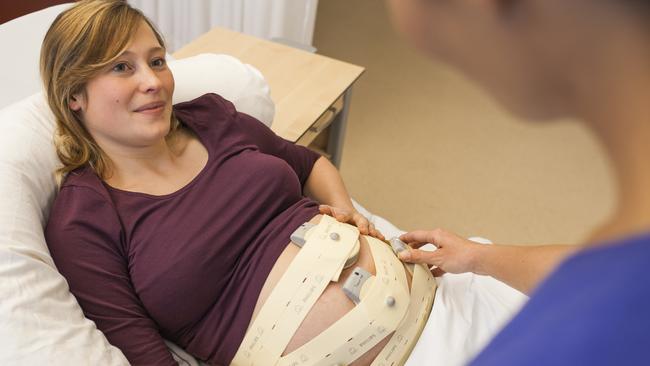Magic of technology changing the way women are able to give birth
TECHNOLOGY is changing the way women are able to give birth in ways that would have seemed like magic even only 20 years ago.

SA News
Don't miss out on the headlines from SA News. Followed categories will be added to My News.
LEGENDARY British sci-fi writer Arthur C. Clarke once said: “Any sufficiently advanced technology is indistinguishable from magic”.
And it seems the magic of technology is happily sprinkling its glitter across South Australia’s labour wards.
Childbirth is still childbirth: often painful, screeching, messy, scary. Sweaty. Beautiful. But technology is changing the way women are able to give birth in ways that would have seemed like magic, even only 20 years ago.
From intranasal pain relief innovations to patient-controlled epidurals to phone apps that time contractions to wireless monitoring of an unborn baby’s heartbeat, a woman’s choice as to how she gives birth has become central to going through labour in 2016.
Renowned Adelaide obstetrician, Dr Chris Sexton, says what has changed most in two or so generations is that labour is “undoubtedly” better now that it has ever been.
“We’re lucky enough to live in a time in history where we can expect a good outcome,” he says. “Even only two generations ago, people didn’t expect that. It’s a nice place to be where people are concentrating as much on how they’re going to have their baby, not just whether baby and mum are going to come through this alive and well.
“I know a lot of women may not want to have all this available technology, but our grandmothers – even my mother says – they would have liked to have the choice.
“You hear stories of women who had a forceps delivery but they don’t remember anything because they had a mask clamped to their mouth, they blacked out and then woke up with a baby in their arms, but didn’t remember anything about it. And it’s much safer. Perinatal statistics and baby survival rates are much higher than they ever were.”
One of the biggest advances in modern labour technology that is helping keep those survival rates high is wireless technology.
Whereas, once, if a woman had a complicated pregnancy or had developed a condition like high blood pressure or was having a multiple birth, she would be connected to a continuous cardiotocography machine (CTG), for constant monitoring throughout labour. And she’d be in bed.

The latest wireless monitoring devices are still attached to the mother, but they allow obstetricians and midwives to monitor vital signs of both mum and bub remotely via an iPad or mobile device. These vital signs include the foetal heart rate and maternal pulse.
And what it means is that women who have had a complicated pregnancy, have twins or multiples or are undergoing a VBAC (vaginal birth after caesarean) and require constant monitoring throughout labour are no longer restricted to staying put in a hospital bed: they can have a bath, jump in the shower, walk around outside. They can have the labour of their choice.
Ruth Woerner is a 31-year-old mother who gave birth to her third child – and first daughter – just over a week ago at Burnside War Memorial Hospital. Her first child, Connor, 4, was born naturally, but her second son, Cameron 2, was born via a scheduled caesarean after being breech.
If Ruth wanted to give birth naturally again, she would require constant monitoring.
The last thing she wanted was to be bedridden throughout labour. But, thanks to a cable-less foetal monitoring system she fulfilled her best choice: daughter Erin was born naturally, weighing 4.13kg, after a labour spent bouncing on an exercise ball, playing cards with her husband and walking around as she pleased.
“With my first child, I spent a lot of time at home going through the initial stage of labour, and was free to be in my own space so it was really good,” she says. “This time, in the labour room I still felt we were in our own space because I was free to move around. And the midwives were able to monitor the readouts from their nursing station, so they didn’t need someone in with me constantly. “At one point, I was really tired, I thought I’d lie down through a couple of contractions, but two contractions later, a couple of midwives came barging in the room saying: ‘Right, we’ve been watching on the screen and baby doesn’t like it; we want you up now’.”
And throughout her entire labour, her obstetrician – Dr Sexton – was able to see what was happening on his mobile device from his consulting rooms away from the hospital. Had something gone wrong, he would have been quicker to respond than he could have even just five years ago.
Former Adelaide paediatric nurse, Libby Simpson, has spent more than two decades working at tech company Philips in the area of wireless monitoring technology.
She says technology like this gives women a better choice in whichever position they’d like to labour in, including having the freedom to be active, without compromising on continuous monitoring
.

“From a mother’s point of view, it gives them a greater choice of position and freedom and we know, as clinicians, there is a lot of clinical evidence that proves that enabling women to ambulate and get in the water and bath, reduces the actual pain they have, reduces the pain relief they’re given and reduces the caesarean section rate, so it gives women the opportunity to have the natural birth they may have wanted,” she says.
Mrs Simpson says that has a flow-on effect to the whole care continuum, with reduced time in operating theatres.
“And for clinicians, they don’t have to tie their patient to the bed, like they had to 20 years ago,” she says.
But she says, vitally, wireless technology can save babies’ lives because obstetricians can view and respond to information more quickly, meaning more rapid response times in an emergency situation.
She says improved technology is providing the best care for women in both the public and private health care system.
Midwifery lecturer at Flinders University, Roz Donnellan-Fernandez, says advances in technology are good, but there is one thing that helps labouring mothers that technology will never be able to replace: the support person standing next to them, encouraging them through and holding their hand.
“Women do better in labour if they’ve got a human presence – a support person – there with them,” she says.
“And that’s whether she’s in a high-tech tertiary hospital in the middle of a city or in a rural and remote developing country; both in terms of her safety and in terms of her satisfaction or how she feels about what’s happening to her.
“I’d like to see good, humane, caring support for all women in labour as a base level that is provided and expected, rather than seeing 20 women hooked up to the latest piece of high-tech equipment without any human presence.”
Still, it would be wonderful if we could stare into a magic crystal ball to see what changes will come to labour wards over the next 20 years. After all, it’s just like Arthur C. Clarke once said: “The only way to discover the limits of the possible is to go beyond them into the impossible.”
HARD LABOUR: CHILDBIRTH THEN AND NOW
PAIN relief has changed considerably, from “gritting your teeth” to today’s methods that can be self-administered.
HOWEVER, childbirth reportedly takes longer now than it did 50 years ago.
HYPNOBIRTHING and water births are common.
WOMEN are now able to be awake during caesarean sections, using spinal blocks and epidurals.
WHERE women were once “sent to bed” for labour, today they are encouraged to walk around. This is aided by wireless monitoring.
IT IS expected that both mother and child will survive the labour process.


